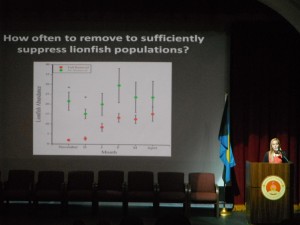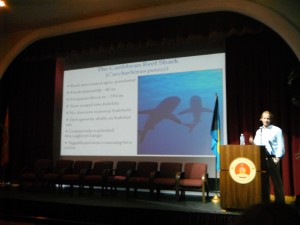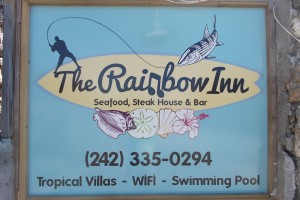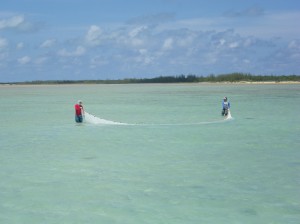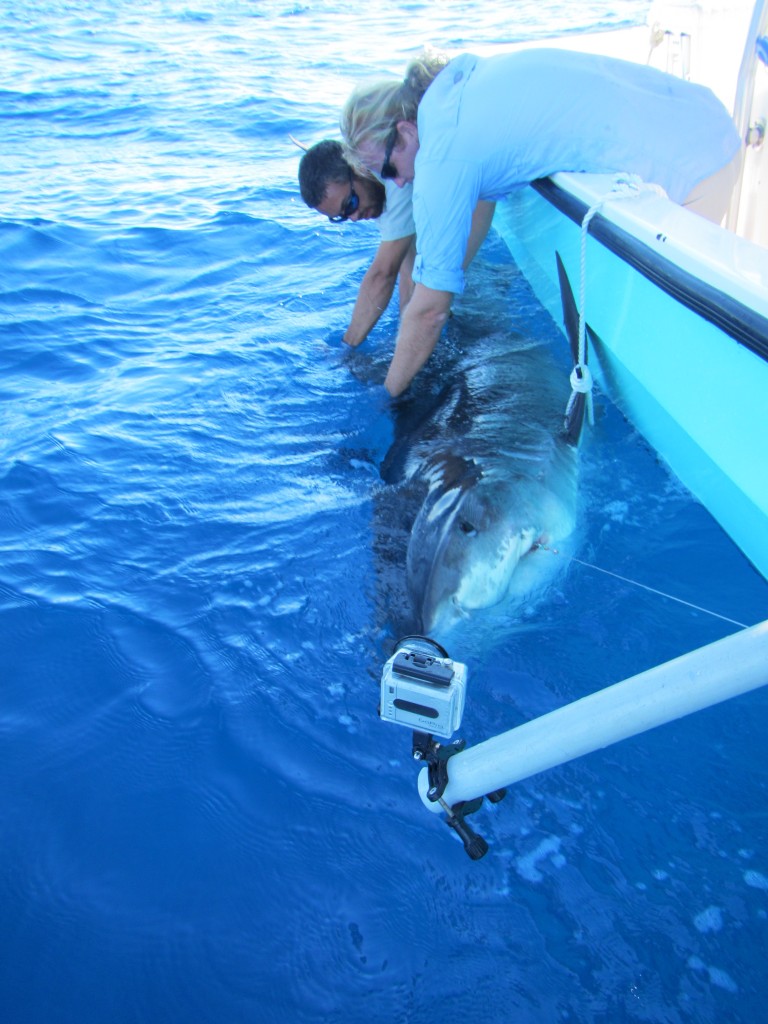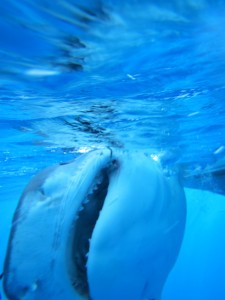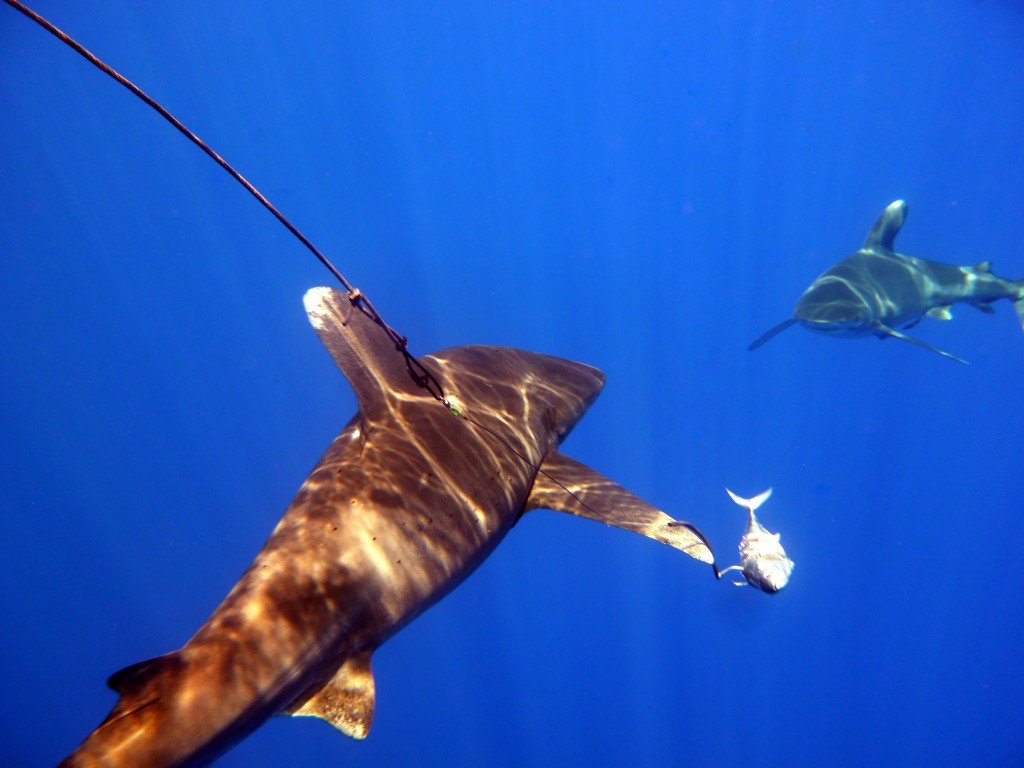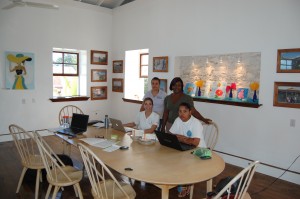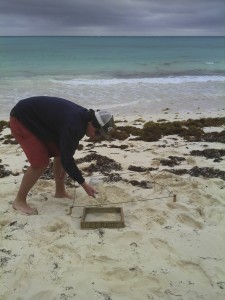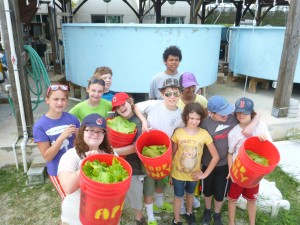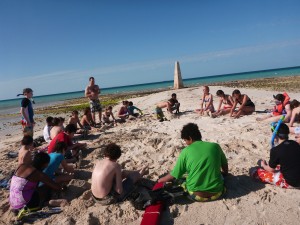Day 2 of the Bahamas National Natural History Conference had a session devoted to new research 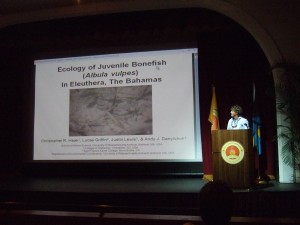 on life history and management of a popular gamefish of the Bahamas, the bonefish (Albula vulpes). The bonefish session, moderated by Dr. Dave Philipp, Executive Director of the Fisheries Conservation Foundation (FCF), started off with a talk by UMass PhD student Chris Haak, who discussed his findings on the early life history of bonefish. With his findings, he theorized that juvenile bonefish actually mimic another species in the flats ecosystem, mottled mojarra, as a way to blend in with their schools for protection from predation.
on life history and management of a popular gamefish of the Bahamas, the bonefish (Albula vulpes). The bonefish session, moderated by Dr. Dave Philipp, Executive Director of the Fisheries Conservation Foundation (FCF), started off with a talk by UMass PhD student Chris Haak, who discussed his findings on the early life history of bonefish. With his findings, he theorized that juvenile bonefish actually mimic another species in the flats ecosystem, mottled mojarra, as a way to blend in with their schools for protection from predation.
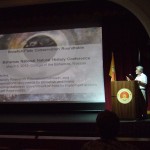
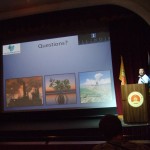 Next to speak was Dr. Karen Murchie from the College of the Bahamas, talking about movement patterns in bonefish and experiments with acoustic telemetry. She found that bonefish move regularly among tidal creeks in South Eleuthera, and was able to follow some fish for almost two years! Dave Philipp then discussed the reproductive ecology of bonefish, and some implications for conservation in the Bahamas. He emphasized the importance of determining source/sink populations to inform management. Continue reading
Next to speak was Dr. Karen Murchie from the College of the Bahamas, talking about movement patterns in bonefish and experiments with acoustic telemetry. She found that bonefish move regularly among tidal creeks in South Eleuthera, and was able to follow some fish for almost two years! Dave Philipp then discussed the reproductive ecology of bonefish, and some implications for conservation in the Bahamas. He emphasized the importance of determining source/sink populations to inform management. Continue reading
